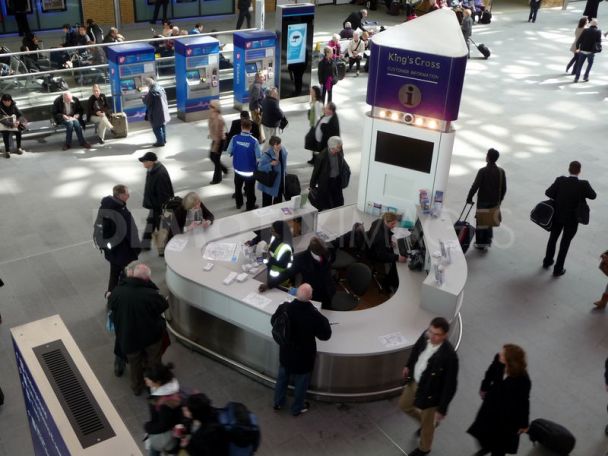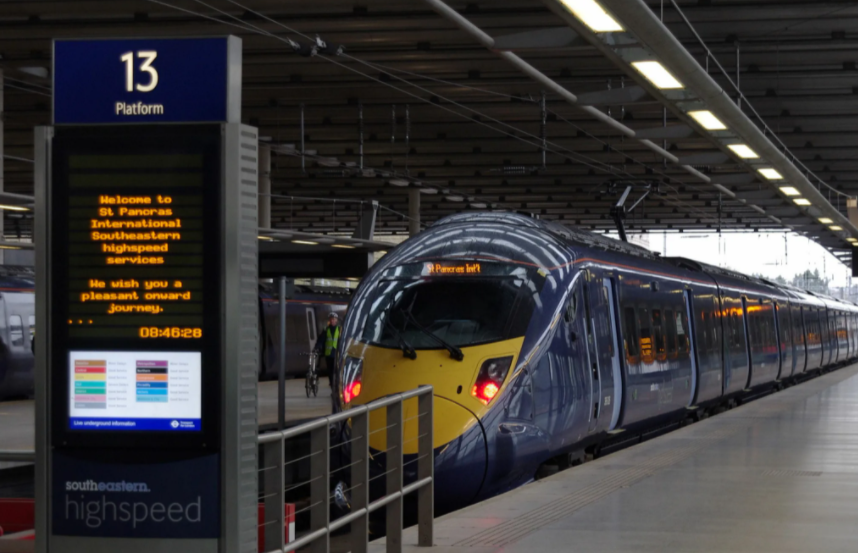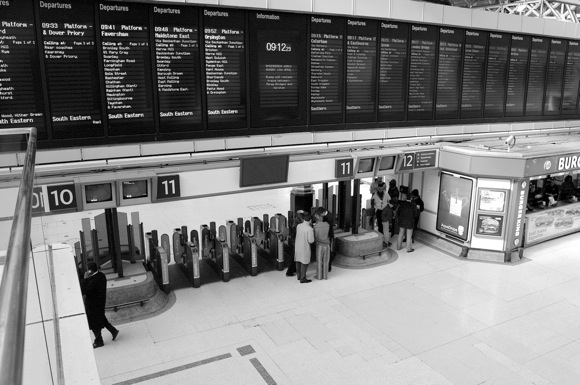Файл: Рабочая тетрадь (для отработки материала практических занятий).docx
ВУЗ: Не указан
Категория: Не указан
Дисциплина: Не указана
Добавлен: 08.11.2023
Просмотров: 25
Скачиваний: 1
ВНИМАНИЕ! Если данный файл нарушает Ваши авторские права, то обязательно сообщите нам.
РАБОЧАЯ ТЕТРАДЬ
(для отработки материала практических занятий)
Если Вы пропустили практические занятия, пожалуйста, скачайте тетрадь, выполните задания и принесите работу на зачёт для устной защиты (=собеседования по грамматическому материалу).
Перед зачётом следует повторить материал и быть готовым продемонстрировать понимание грамматических явлений на примерах упражнений, предложенных преподавателем.
ФИО:_______
шифр:_______
группа:______
Задание № 1 – ВРЕМЕНА ГЛАГОЛА
-
The workers (to construct) a new railway line.
Заполните таблицу, раскрыв скобки и преобразовав данное предложение в соответствии с таблицей времён действительного залога.
Предложения переведите на русский язык.
| Группа Время | Indefinite | Continuous | Perfect |
| Present | | | |
| Past | | | |
| Future | | | |
-
A new railway line (to construct) by the workers.
Заполните таблицу, раскрыв скобки и преобразовав данное предложение в соответствии с таблицей времён страдательного залога.
Предложения переведите на русский язык.
| Группа Время | Indefinite | Continuous | Perfect |
| Present | | | |
| Past | | | |
| Future | | | |
Задание № 2 - ФУНКЦИИ ГЛАГОЛОВ «to be» и «to have»
-
Our students are translating this text now. -
Our students are to translate this text. -
Our students are at the lecture. -
Our students are the future engineers. -
The railway company has new trains. -
The railway company has to make deep changes in perspective. -
The company has improved their production. -
Everything had been done. -
All the documents were signed by the engineer. -
The new engine is to be tested in our laboratory.
Распределите данные предложения по 4 группам, учитывая функции глаголов «to be» и «to have». Обоснуйте свой выбор. Предложения переведите на русский язык.
1. Смысловая функция:
2. Функция глагол-связка:
3. Вспомогательная функция:
4. Модальная функция:
Задание № 3 - СЛОВООБРАЗОВАНИЕ С ПОМОЩЬЮ СУФФИКСОВ
-
automatically -
operator -
electricity -
movement -
central -
international -
computer -
beginning -
information -
useful -
usefully -
powerless -
translator -
installation -
mainly
Определите часть речи по суффиксу и распределите данные слова по 3 группам. Переведите слова.
| имена существительные | имена прилагательные | наречия |
| | | |
Задание № 4 – ПРИЧАСТИЯ. ИХ ФОРМЫ И ФУНКЦИИ
Подчеркните причастия, указав их форму (Participle I, Participle II) и функцию (определение или обстоятельство). Переведите предложения.
-
The equipment used in our workshop is very expensive.
-
The students speaking good English must help their classmates.
-
Testing the new machine the engineers got good results.
-
When asked she answered.
Укажите номер предложения, в котором есть модальный глагол: ______
Задание № 5 - МОДАЛЬНЫЕ ГЛАГОЛЫ И ИХ ЭКВИВАЛЕНТЫ
Вставьте модальные глаголы или их эквиваленты.
1. Ему разрешили провести испытание.
He ____________ carry out the test.
2. Ему разрешат провести испытание.
He ____________ carry out the test.
3. Он сможет провести испытание.
He ____________ carry out the test.
4. Он должен был
провести испытание по плану исследований.
He ____________ carry out the test.
5. Он должен будет провести испытание.
He ____________ carry out the test.
Задание № 6:
Работа с текстом № 1
-
Прочитайте текст:
From the History of the Russian Railways
In the early 1830s Russian inventors the Cherepanovs, father and son, built the first Russian steam locomotives. The first railway using steam traction was put into operation at the Nizhniy Tagil metallurgical works. The first railway track was built in Russia in 1837 between Saint-Petersburg and Tsarskoye Selo. The Department of Railways, later part of the Russian Ministry of Communications, was created in the Russian Empire in 1842 in order to oversee the construction of Russia’s first major railway line. The railway linked the imperial capital Saint-Petersburg and Moscow was built between 1842 and 1851. In 1862, railway lines were completed between St. Petersburg-Warsaw and Nizhny Novgorod.
On 15 June 1865, an edict of Alexander II established the Ministry of Communications, which absorbed the Department of Railways. In the 1860s and 70s, Pavel Melnikov, Russia’s first Minister of Communications, played a key role in the expansion of the railway network throughout European Russia.
The Trans-Siberian Railway connecting Moscow and European Russia with the Russian Far East provinces, Mongolia, China and the Sea of Japan was built between 1891 and 1916.
During the First World War and especially the Russian Civil War more than 60% of the Russian railway network and more than 80% of the carriages and locomotives were destroyed.
In the Soviet period People's Commissariat of Communications expanded railway network to a total length of 106,100 km by 1940. During the Great Patriotic War the railway system played a vital role in the war effort transporting military personnel, equipment and freight to the frontlines and often evacuating entire factories and towns from European Russia to the Ural region and Siberia. After the war the Soviet railway network was re-built and further expanded to more than 145,000 km of track by major additions such as Baikal Amur Mainline.
Following the collapse of the Soviet Union its railway system broke up into national railway systems of various former Soviet republics.
In 2003 a vast structural reform was implemented in order to preserve the unity of the railway network and separate the functions of state regulation from operational management: On 18 September, 2003, Decree No. 585 of the Russian Government established the Russian Railways Public Corporation.
-
Выпишите слова по железнодорожной тематике:
-
Составьте план текста:
-
Напишите краткий пересказ текста на русском языке:
Работа с текстом № 2
-
Read the text:
Railway stations
A railway station is a railway facility where trains regularly stop to load or unload passengers and freight. It generally consists of a platform next to the track and a station building providing related services. Stations may be at ground level, underground, or elevated. Connections may be available to intersecting rail lines or other transport modes such as buses, trams or other rapid transit systems. The world's oldest station built for steam locomotives which is still in use is Broad Green railway station in Liverpool, England, built in 1830.
The longest railway routes across Russia start at Komsomolskaya Square in Moscow, at the three railway stations — Leningradsky, Yaroslavsky and Kazansky.
Leningradsky Rail Terminal is the oldest of Moscow’s principal railway stations. The station was constructed between 1844 and 1851, designed by Konstantin Thon as the terminus of the Moscow–Saint Petersburg Railway, a pet project of Emperor Nicholas I. Regular connection was opened in 1851. From here trains go to Saint-Petersburg, Murmansk, Helsinki (Finland), Borovichi, Novgorod, Pskov, Tallinn, and Tver. Traveling by train from Leningradsky station is really the most convenient way to get to St. Petersburg. It takes about 5,5 to 9,5 hours to get there depending on the train class.
From Kazanskiy Rail Terminal which is considered to be the largest in Europe, trains depart to many southern and eastern directions: Kazan, Adler, Samara, Ufa, Tyumen, Chelyabinsk, and many other cities of Russian Povolzhye, Ural, Siberia, and the Middle East. Construction оf the modern building according to the design оf an architect, Alexey Shchusev started іn 1913 аnd ended іn 1940. The building resembles the Söyembikä Tower іn Kazan.
Yaroslavsky Rail Terminal, built nearby Leningradsky station in 1862, is a terminus of the Trans-Siberian Railway – the longest railway in the world. Connecting Moscow and Vladivostok, it is around 9,300 kilometers (5,800 miles) long and spans 8 time zones. This terminal is a transport knot, connecting Moscow with North regions, Ural, Siberia, the Far East, China, Mongolia and North Korea. Because of diversity of routes Yaroslavsky station is even more crowded and chaotic than other railway stations and considered to be one of the busiest in Russia.
As a rule, stations usually have staffed ticket sales offices, automated ticket machines, or both, although on some lines tickets are sold on board the trains. Many stations include shops, fast food or restaurant facilities. Other station facilities may include: left-luggage, lost-and-found, departures and arrival boards, luggage carts, waiting rooms, taxi ranks and bus bays. The larger stations are, the greater range of facilities they have.
As well as providing services for passengers and loading facilities for goods, stations can sometimes have locomotive and rolling stock depots (usually with facilities for storing and refuelling rolling stock and carrying out minor repair jobs).
Vocabulary:
elevated - надземный, эстакадный
the terminus - терминал, конечная станция
rapid transit systems - скоростные системы перевозок
a pet project - детище
a transport knot - транспортный узел
ticket sales offices - билетные кассы
left-luggage - камера хранения
lost-and-found - бюро находок
luggage carts - тележки для багажа
repair jobs - ремонтные работы
2. Find the English equivalents in the text:
-
сооружение -
виды транспорта -
отправляться, уезжать -
табло прибытия и отправления поездов -
вокзал
3. Read the text again and answer the questions:
-
What sort of a railway facility is a railway station? -
Where is the oldest station in the world located? -
Where do the longest railway routes across Russia start? -
When was Yaroslavsky Rail Terminal built? -
Stations provide only services for passengers, don’t they?
4. Would you like to read the words/word combinations and match them with the pictures?
1. Arrival/departure board
2. Platform number
3. Ticket machine
4. Platform
5. Information desk
6. Railway track
7. Driver’s cab
8. Ticket office
9. Carriage
10. Train station barriers













